Australian Tropical Rainforest Plants - Online edition
Calamus australis Mart.


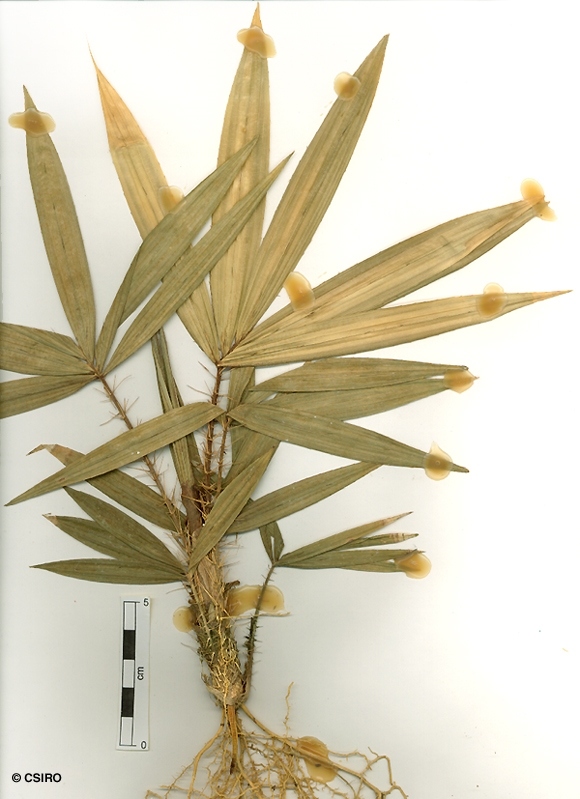

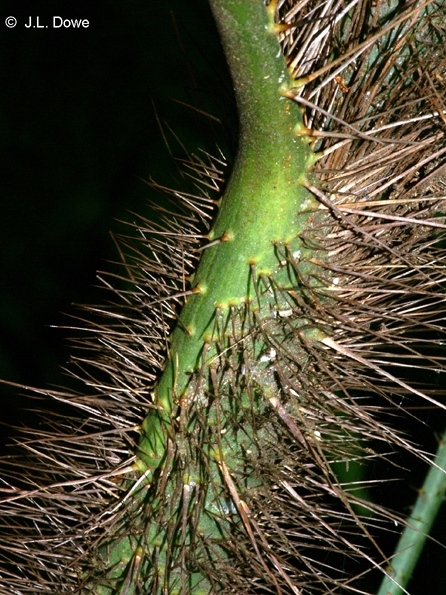
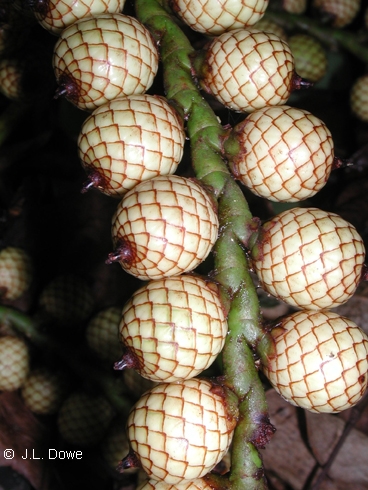


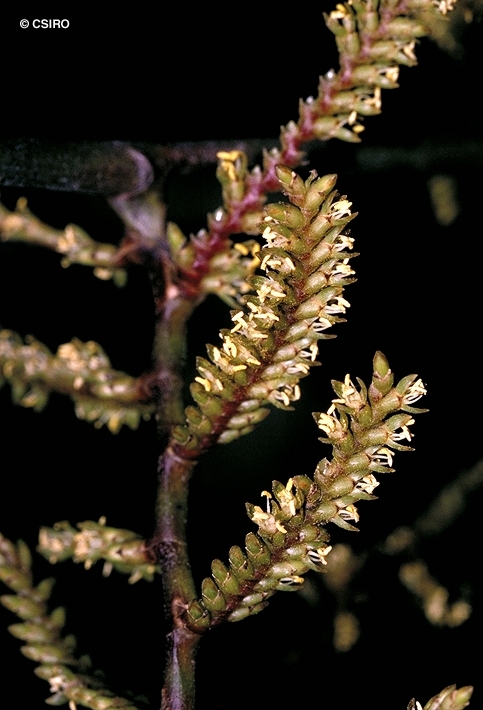


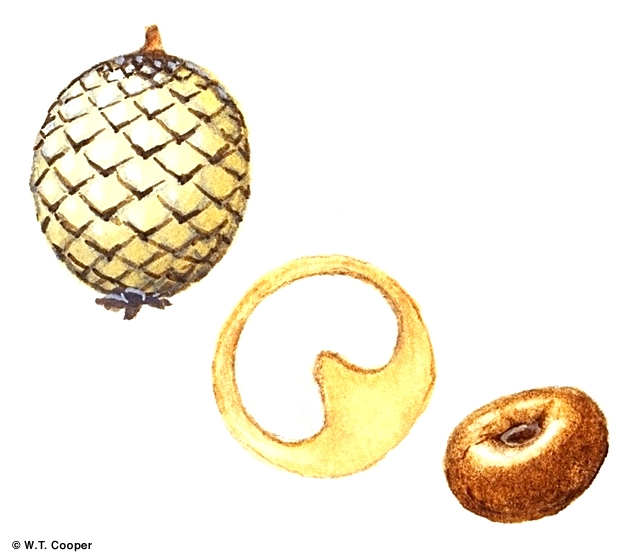
Martius, C.F.P. von (1838) Historia Naturalis Palmarum 3 : 342. Type: Fitzroy Island, Cape-Grafton (16 51 S, 163 33 E, 1819, A. Cunningham.
Lawyer Cane; Wait-a-While; Hairy Mary; Cane, Lawyer
A slender vine not exceeding a stem diameter of 2 cm. Vine stem smooth and glassy.
Compound leaves up to 1 m long or longer. Leaflets 34-40 in each compound leaf. Leaflet blades sessile, about 6-30 x 1-3 cm, margin usually finely toothed, venation longitudinal and parallel with 7 veins obvious. Each compound leaf ending in a single deeply bilobed leaflet or two opposite leaflets. Compound leaf axis with numerous straight spines on the upper surface mainly towards the base and many recurved spines on the underside. Sheathing base of the petiole densely clothed in straight spines. Tendrils arising from the sheathing bases of the petioles and armed with recurved spines.
Inflorescence up to 1-2 m long attached to the sheathing leaf base opposite the compound leaf petiole. Male flowers: Flowers densely packed, each about 3 mm diam. Outer tepals about 2-3 mm long, fused towards the base. Inner tepals about 3-4 mm long, free from one another. Stamens 6, each filament about 1 mm long, anther about 1 mm long. Pollen yellow. Rudimentary styles present. Female flowers: Flowers not densely packed in the inflorescence at anthesis. Young inflorescences consist of female and sterile male flowers. The sterile male flowers are aborted so that the mature inflorescence contains only female flowers. Outer tepals about 2-3 mm long. Inner tepals about 2-3 mm long. Staminodes 6. Ovary about 2 mm long. Styles 3. Ovules one per locule.
Fruits +/- globular, about 15 x 10-11 mm, clothed in diamond-shaped, shingle-like scales. Stylar remnants often persisting as a 3-armed anchor-like structure at the apex. Seeds depressed globular, about 8-10 mm diam., base flattened with a crater-like depression in the centre. Embryo plug-like, about 1-1.2 mm long.
Endemic to Queensland, occurs in CYP, NEQ and CEQ. Altitudinal range in northern Australia from near sea level to 1600 m. Grows in gallery forest and well developed lowland, upland and mountain rain forests on a variety of rock types.
Fruit eaten by Cassowaries and Fruit Pigeons. Cooper & Cooper (1994).
Canes sometimes used in basket making. The leaves and stem of this species are regarded as a contraceptive. Cribb (1981).
Distinguishing features: leaf not terminating in a cirrus (whip-like extension armed with spines); apex of pinnae tapered not truncate; leaf sheath armed with spines arranged randomly; leaflets without spines on upper surface veins.





